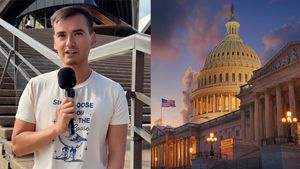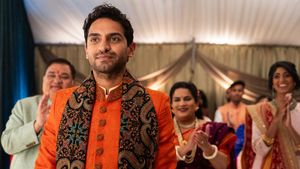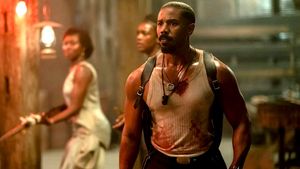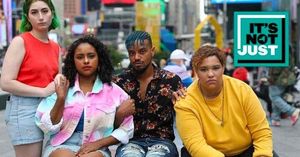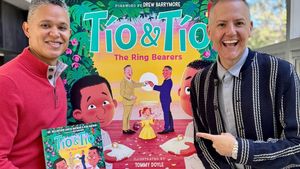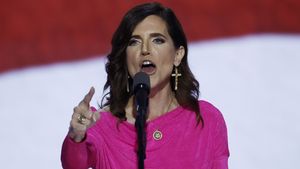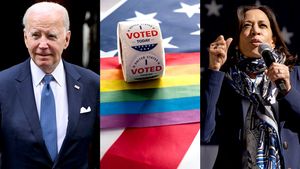The attack on Donald Trump at his rally in Butler, Pa., Saturday, led to condemnations of political violence from all across the spectrum. But if anyone’s shocked that the attack happened, well, there’s actually a long history of such violence in the U.S., with duels between rivals, fights in Congress, and assassinations or attempted assassinations of presidents, other politicians, and civil rights leaders — including, from our own community, Harvey Milk.
Hamilton and Burr
Centuries ago, it was common for men (not women, usually) to challenge one another to duels if they felt they had been insulted.
The 1804 duel between Alexander Hamilton and Aaron Burr is undoubtedly the most famous one today, thanks to Lin-Manuel Miranda’s Broadway musical Hamilton. Hamilton was the first U.S. Treasury secretary, and Burr was vice president from 1801 to 1805. The two men had been political adversaries for some time, but personal remarks Hamilton had reportedly made about Burr were the immediate impetus for the duel. Burr heard that Hamilton, at a dinner party, had called him “a dangerous man” and worse. After some back-and-forth, they agreed to duel July 11 in Weehawken, N.J., just across the Hudson River from New York City, even though Hamilton opposed dueling and his oldest son, Philip, had been killed in a duel three years earlier. When they fired their shots, Hamilton missed, but Burr hit Hamilton in the abdomen, and he died the next day. Burr ended up being put on trial not over the duel but for treason due to a plot to set up a new government in Mexico. He was acquitted, although disgraced.
Violence in Congress
In the mid-nineteenth century, emotions were running high over slavery. That led to a famous assault on the floor of the U.S. Senate. Sen. Charles Sumner, a Massachusetts Republican (Republicans were the good guys then), made an impassioned antislavery speech in the Senate May 19, 1856. Sen. Preston Brooks, a Democrat from South Carolina, felt Sumner had insulted his state, so three days later Brooks attacked Sumner in the Senate chamber. “If he had believed Sumner to be a gentleman, he might have challenged him to a duel,” the U.S. Senate website notes. “Instead, he chose a light cane of the type used to discipline unruly dogs.” He hit Sumner in the head several times with the metal-topped cane. Sumner was seriously injured but survived and returned to the Senate after his recovery, serving another 18 years. Brooks resigned his seat, was elected again, then died of an infection the next year, aged 37. There were numerous other incidents of violence in Congress and state legislatures in this period, usually over slavery, and politicians often carried guns or knives.
The Lincoln assassination
Just days after the Civil War ended, leaving many dead on both sides, the nation was shocked by another tragedy. President Abraham Lincoln, attending a play, Our American Cousin, April 14, 1865, at Ford’s Theatre in Washington, D.C., was shot in the head by John Wilkes Booth, a well-known actor and Confederate sympathizer. Lincoln died the next day. Booth fled, but U.S. troops tracked him down in Virginia April 26 and killed him. Booth had co-conspirators tasked with killing various Lincoln administration officials. They didn’t succeed, although Secretary of State William Seward suffered serious wounds when one of the co-conspirators attacked him with a knife.
This wasn’t the first attempt on Lincoln’s life. After his election in November 1860, he received numerous death threats, mostly motivated by his antislavery views. There was concern as Lincoln began his train trip from Illinois to Washington, leaving in February 1861 for his inauguration in March. Detective Allan Pinkerton had discovered a plot against Lincoln based in Baltimore — Maryland was a slaveholding state at the time. But Pinkerton managed to get Lincoln through Baltimore without the president-elect being noticed. Lincoln arrived safely in Washington to take his oath of office. Smithsonian Magazine has an extensive article on the “Baltimore plot.”
More presidential assassinations and attempts
James Garfield, a Union general in the Civil War and later a Republican congressman, was elected president in 1880. On July 2, 1881, just four months after his inauguration, he was shot in a Washington, D.C., train station by Charles Guiteau, who had unsuccessfully sought a diplomatic post. Garfield lingered for a couple of months but developed infections and died September 19, 1881. In 1882, Guiteau was convicted of Garfield’s murder and executed.
William McKinley was in his second term as president when he was shot after giving a speech at the Pan-American Exposition in Buffalo, N.Y., September 6, 1901. He died eight days later. Leon Czolgosz, an anarchist, was quickly arrested, then convicted and executed before the year was out. Vice President Theodore Roosevelt advanced to the presidency.
Roosevelt went on to survive an assassination attempt. His tenure as president ended in 1909, but in 1912 he decided to run again, under the banner of a third party, the Progressive Party, nicknamed the “Bull Moose Party.” He ran against Republican incumbent William Howard Taft and Democrat Woodrow Wilson. Roosevelt was shot in the chest on his way to deliver a campaign speech in Milwaukee, and he gave the speech anyway, then went to the hospital. The shooter was John Schrank, a mentally ill man who said he had a dream in which McKinley identified Roosevelt as his murderer. Schrank also said he wanted to deny Roosevelt a third term as president (he had served the remainder of McKinley’s term and then had been reelected). Schrank pleaded guilty and was placed in a mental asylum for the rest of his life. Roosevelt received 27 percent of the vote in the presidential election, but Wilson emerged the winner.
Franklin D. Roosevelt, a distant cousin of Theodore and a Democrat, was the intended target of an assassin at a park in Miami as president-elect on February 15, 1933. But the shooter, Giuseppe Zangara, instead hit Chicago Mayor Anton Cermak, who had come to Miami to meet with FDR. Zangara was an unemployed man described as deranged. A woman standing nearby had grabbed Zangara’s arm and interfered with his aim, but he still shot Cermak and four others. Cermak died March 6, and Zangara was executed two weeks later.
The 1960s: The Kennedys, King, Evers, and Malcolm X
This was a decade that started out with a great deal of idealism but also saw much conflict and shocking violence. Most Americans who lived through President John F. Kennedy’s assassination on November 22, 1963, can tell you exactly where they were and what they were doing when they heard of his death. The young, handsome, charismatic Democrat was beloved by many and vilified by some, but the whole nation went into mourning. Kennedy was riding in an open convertible — something presidents will not do now — in a motorcade in Dallas with First Lady Jacqueline Kennedy, Texas Gov. John Connally, and Connally’s wife, Nellie, plus a Secret Service agent and a driver. The president was shot in the head and was pronounced dead at a Dallas hospital shortly thereafter. Gov. Connally was hit as well but survived. The shooter was identified as Lee Harvey Oswald, but debate still rages about whether Oswald acted alone or was part of a conspiracy. Jack Ruby, a nightclub owner, shot and killed Oswald two days later. Ruby died of natural causes in 1967 while awaiting a new trial after his initial conviction had been overturned.
The 1960s was a time of much activism for equal rights for Black Americans, and several leaders of the movement were victims of violence — along with many others who were brutalized by police and racist civilians.
Medgar Evers was a field secretary for the NAACP in Mississippi and devoted much of his life to the civil rights movement. He registered voters, organized protests, and more. On June 12, 1963, he was shot in the back as he approached his house in Jackson, Miss., having just attended an NAACP meeting. White supremacist Byron De La Beckwith was accused of Evers’s murder, but in two trials, all-white juries failed to agree on a verdict, so he remained free for decades. In 1990, Evers’s widow, Myrlie, also a prominent civil rights activist, asked prosecutors to reopen the case against De La Beckwith. He was convicted in 1994 and sentenced to life in prison. He died in 2001.
Malcolm X was a key figure in the Black Power movement. An activist in the Nation of Islam, he denounced the nonviolent methods of protest advocated by Martin Luther King Jr. and others, and he declared for some time that all white people were evil and Blacks were superior. He eventually adopted a more inclusive stance and broke with the Nation of Islam. He was shot and killed while delivering a speech February 21, 1965, in New York City. Three members of the Nation of Islam — Talmadge Hayer, Muhammad Aziz, and Khalil Islam — were arrested. Hayer confessed but said the others were not involved. All were convicted, however. In 2021, Aziz and Islam were exonerated.
1968 was the most turbulent year of the turbulent decade. King, the most famous American civil rights leader, was fatally shot April 4, 1968, while standing on a balcony at the Lorraine Motel in Memphis, Tenn. King had come to Memphis to support striking sanitation workers, as he was an activist for labor and poor people — and against the Vietnam War — as well as a champion of racial equality. The following year, James Earl Ray, a white man, pleaded guilty to King’s murder and was sentenced to 99 years in prison. Ray later proclaimed his innocence and contended there was a conspiracy to kill King, but he offered little evidence. He died in 1998.
Two months later, on June 5, 1968, Robert F. Kennedy, President Kennedy’s brother, was shot at the Ambassador Hotel in Los Angeles, and he died the next day. Seeking the Democratic presidential nomination, he had just won the California primary. Sirhan Sirhan, a Palestinian-Jordanian immigrant, was convicted of RFK’s murder the following year. His motive has been attributed to Kennedy’s support for Israel. He was sentenced to death, but California abolished the death penalty in 1972, so his sentence was changed to life in prison. He remains in prison at age 80.
Ford and Reagan
Gerald Ford, who succeeded Richard Nixon as president when Nixon resigned in 1974, survived two attempts on his life. On September 5, 1975, while Ford was visiting Sacramento to meet with California Gov. Jerry Brown, Lynette “Squeaky” Fromme, a follower of Charles Manson, pointed a gun at the president but didn’t fire. Seventeen days later, Sara Jane Moore, a woman associated with radical groups, fired a shot at Ford while he was in San Francisco; she missed. Both served terms in prison, with Moore being released in 2007 and Fromme in 2009.
Ronald Reagan was shot and wounded by John Hinckley outside a hotel in Washington, D.C., March 30, 1981, just two months into his presidency. Reagan’s press secretary, James Brady, was also hit and was paralyzed. A police officer and a Secret Service agent were wounded as well. Hinckley, who said he hoped to impress actress Jodie Foster with his action, was acquitted due to insanity and committed to a psychiatric hospital. He was released in 2016, with officials concluding his mental illness had abated and he no longer posed a danger to anyone. He has apologized to Foster.
Brady and his wife, Sarah, became activists for gun control. When James Brady died in 2014, a medical examiner ruled his death a homicide, a result of the 1981 shooting.
Harvey Milk
Milk is the LGBTQ+ community’s most famous political martyr. Originally a New Yorker, he moved to San Francisco in the 1970s, where he opened a camera shop and became involved in politics. He was elected to the San Francisco Board of Supervisors in 1977, becoming the first out gay person to win any office in California. On November 27, 1978, Dan White, a disgruntled former city supervisor, assassinated him and Mayor George Moscone at San Francisco City Hall. White had resigned from the board but wanted to rejoin it, and he believed Moscone and Milk were blocking him from that.
Milk had received numerous death threats due to his activism. He left a recording to be played after his death in which he said, “If a bullet should enter my brain, let that bullet destroy every closet door in the country.”
White was convicted in 1979 of manslaughter, not murder, and received a sentence of eight years in prison, which was widely considered too light. White was released from prison in January 1984, having served only a portion of his sentence, and he died by suicide in 1985.
Milk’s story has been told in books including The Mayor of Castro Street by Randy Shilts, the Oscar-winning documentary The Times of Harvey Milk, and the dramatized film Milk, which brought Oscars to screenwriter Dustin Lance Black and star Sean Penn.
Gabby Giffords
A mass shooting in 2011 claimed the lives of nine people and severely injured U.S. Rep. Gabrielle "Gabby" Giffords of Arizona. On January 8 of that year, Giffords, a Democrat, was meeting with constituents at an event called “Congress on Your Corner” in a supermarket parking lot in Tucson. A gunman, Jared Lee Loughner, opened fire, hitting Giffords just above the left eye. She sustained a major brain injury that caused her difficulty with speech and language. Twelve others were wounded, and those killed included a 9-year-old girl and a federal judge. Loughner, who was mentally ill, pleaded guilty and was sentenced to life in prison. Giffords and her husband, retired astronaut Mark Kelly, became gun control activists like the Bradys before them. Giffords returned to the House briefly, then resigned, while Kelly is now a Democratic U.S. senator from Arizona.
One of the heroes of that tragic day was Daniel Hernandez, a young gay man who was an intern on Giffords's staff. He applied pressure to her wound to minimize bleeding, and he helped her remain conscious until an ambulance came. His actions helped save her life. Hernandez then ran for office himself. He served six years on a Tucson-area school board and then six years in the Arizona House of Representatives. He made an unsuccessful run for U.S. House in 2022. He is now associate executive director of Stand for Children, an organization that works for education equity and racial justice.
Steve Scalise
Another incident of political violence that had a queer hero was the June 14, 2017, attack on a congressional baseball practice in which U.S. Rep. Steve Scalise, a Louisiana Republican, was seriously injured. A gunman shot at the assembled members, hitting Scalise with a bullet that went through his hip and damaged blood vessels, bones, and internal organs. Capitol Police were able to take the shooter down and prevent additional damage, while one of the officers, Special Agent Crystal Griner, was shot in the leg but continued to do her duty. She was one of five officers who received the Medal of Valor, the nation's highest honor for public safety personnel, from none other than Donald Trump. Her wife, Tiffany Dyar, attended the ceremony with her.






































